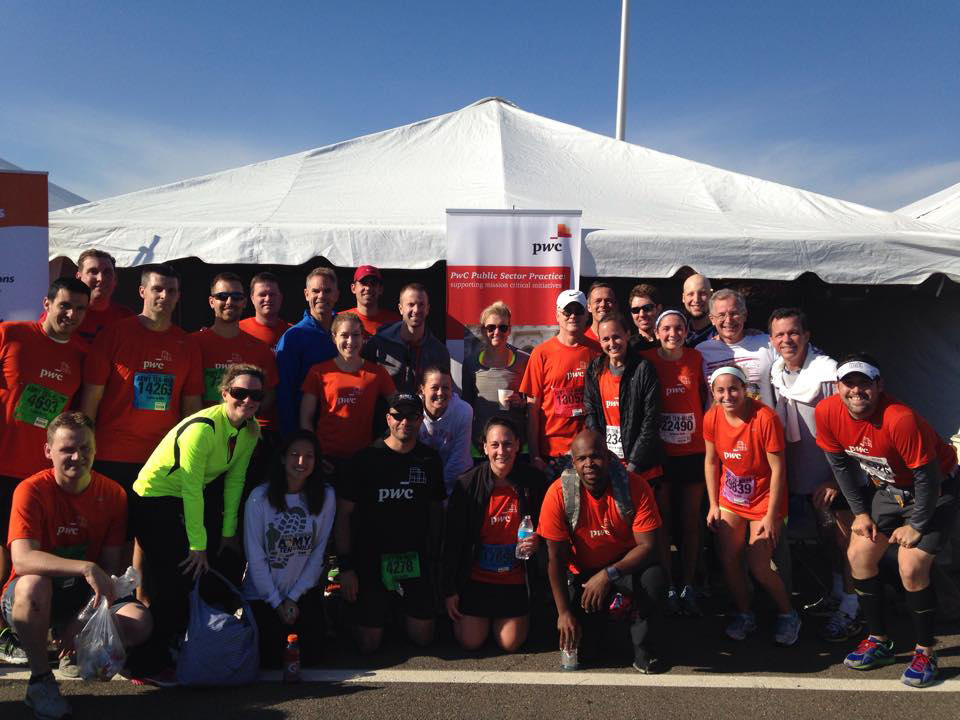Blogrige
The Official Baldrige Blog

Most workers today receive an annual ratings review, where they are given feedback on their performance over the last 12 months. That feedback is probably too late, however, to allow any improvement or innovation of already-completed projects or to discuss skills that could have been developed in the moment.
Performance ratings and annual feedback are fairly common workforce development practices, but what about for those exceptional companies, the Baldrige Award recipients, who believe that the status quo is never quite good enough?
At the upcoming Quest for Excellence® Conference, Allison Carter, PricewaterhouseCoopers (PwC) director, will be presenting on how the Baldrige Award-winning PwC Public Sector Practice used Baldrige feedback to transform its workforce development process.
Carter said the business unit implemented a new workforce development process about a year and a half ago–even though the old system was working well and was part of its application that received Baldrige category best practice recognition in 2012. But feedback received after applying for the Malcolm Baldrige National Quality Award, along with analysis on the effectiveness of the existing process, provided the catalyst to help us decide to move to a new system, said Carter.
“The underlying point is even when you think you got it right, there are always opportunities to continue to innovate and improve,” she said. “We recognized opportunities for improvement around getting more people more timely feedback. We found that our people weren’t getting feedback in a real-time manner. They were getting feedback all at once, at the end of the year, which wasn’t very helpful for their career progression.”
PwC has accomplished some pretty innovative things with its new workforce development process, she said; for example, performance ratings have been eliminated in favor of a real-time feedback process.
“Some of the things we were doing were inefficient. We found ways to cut down on the amount of time we were spending, while maintaining the level of quality of the reviews,” added Carter. Such a transformation has helped PwC stay competitive from a recruiting perspective and has helped staff by talking about opportunities to grow and improve all year.
“Such development makes them better qualified to support the work we’re doing,” Carter added. “New employees see that we’re really spending the time and effort. We’re a very people-focused culture. I think that’s attractive from a recruiting perspective.”
Carter said use of the Baldrige Excellence Framework has supported this transformation and helped the organization recognize that it needed to evaluate not just the outcomes of a program but the overall program itself.
“Baldrige forces you to take a hard look at continuous improvement, take a hard look at your business. . . . Identify where you have gaps. . . . For organizations like ours, even if you don’t intend to ever apply for a Baldrige Award, the Criteria are extremely beneficial in helping you identify organizational gaps that you need to address, that you may not even realize you have,” she said.
“If we had just looked individually at the program, we would have seen that people are getting rewarded and seemed pretty satisfied, but opportunities for overall innovation are helpful. [Without Baldrige,] we wouldn’t have seen the big picture for overall innovation. . . . Baldrige forces you to look at the entire picture, from both the macro and micro levels. And I think you need both,” added Carter.
Baldrige feedback also has been used to support innovation, and during her presentation, Carter plans to address how that feedback was used to take action.
“Your first instinct when you get the feedback report is to argue,” she said. “But once you get past that initial defensiveness, and you really dig into the feedback, you recognize that there always is room for improvement. Our system was working great, our satisfaction scores were good. For our purposes, it was working well, and we didn’t need to change it. But using Baldrige and the other data that we pulled together, we were able to take a critical look at our processes and not just accept the status quo.”
Carter said it’s important to note that a transformation like this takes time, because it’s about changing the culture in the way that your people think about feedback. But the transformation and winning the Baldrige Award have already brought great benefit to the organization.
“Our clients have recognized . . . what an accomplishment [winning the Baldrige Award] is, and it has definitely helped us open doors from a client perspective. People are curious. For a large professional services firm to receive the award, what does that mean? . . . PwC is a big brand name, but adding Baldrige to our list of accomplishments has definitely been a key differentiator.”
Register now for the 28th Annual Quest for Excellence Conference to attend this session, “Talent Transformation,” as well as other sessions from role-model Baldrige Award recipients, past and present, from every sector of the U.S. economy.





